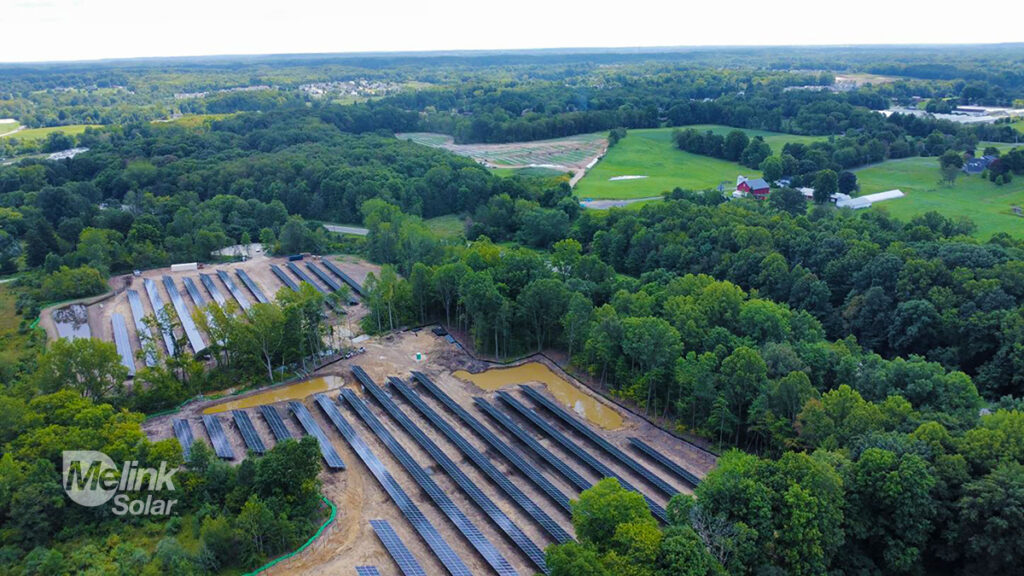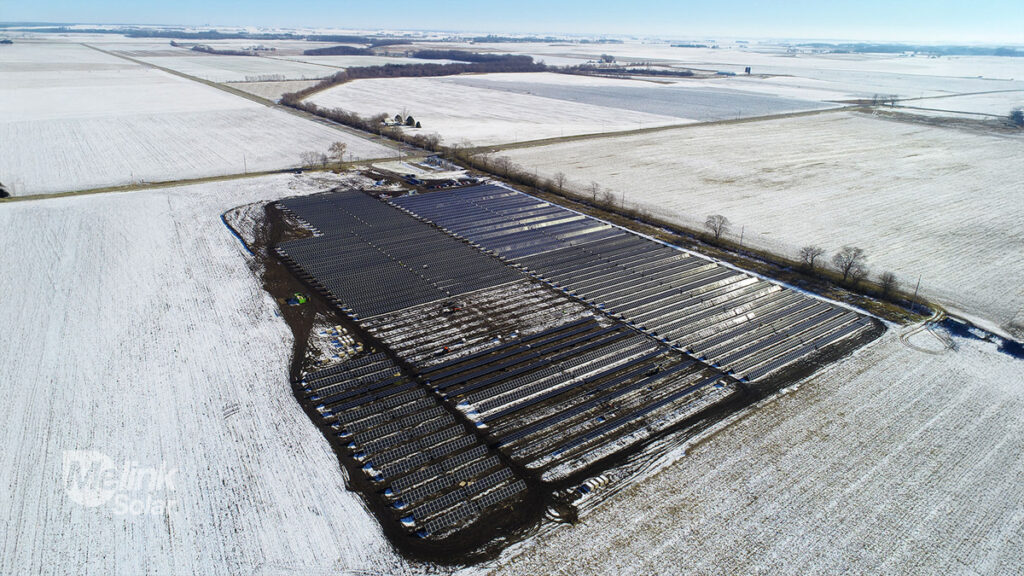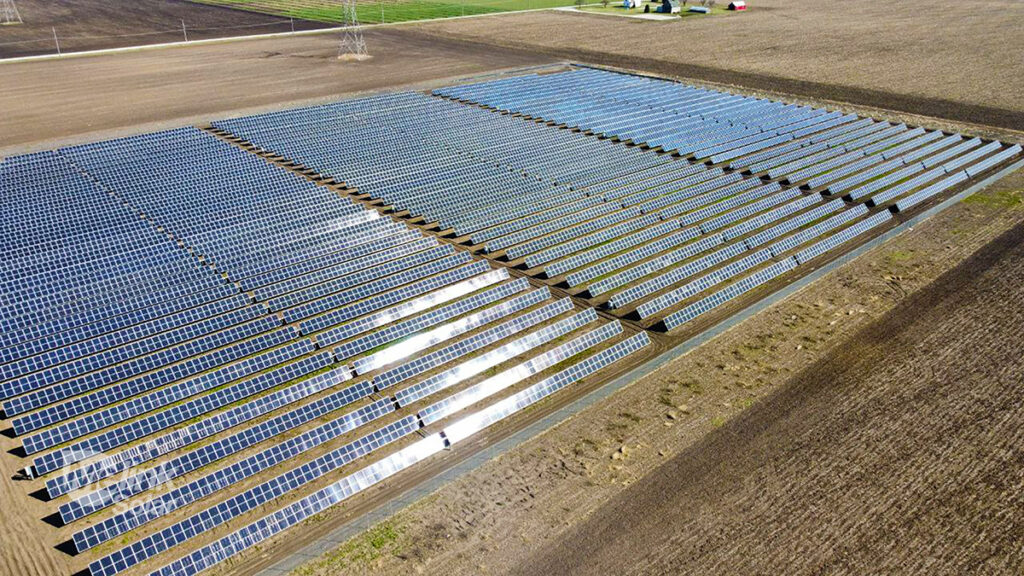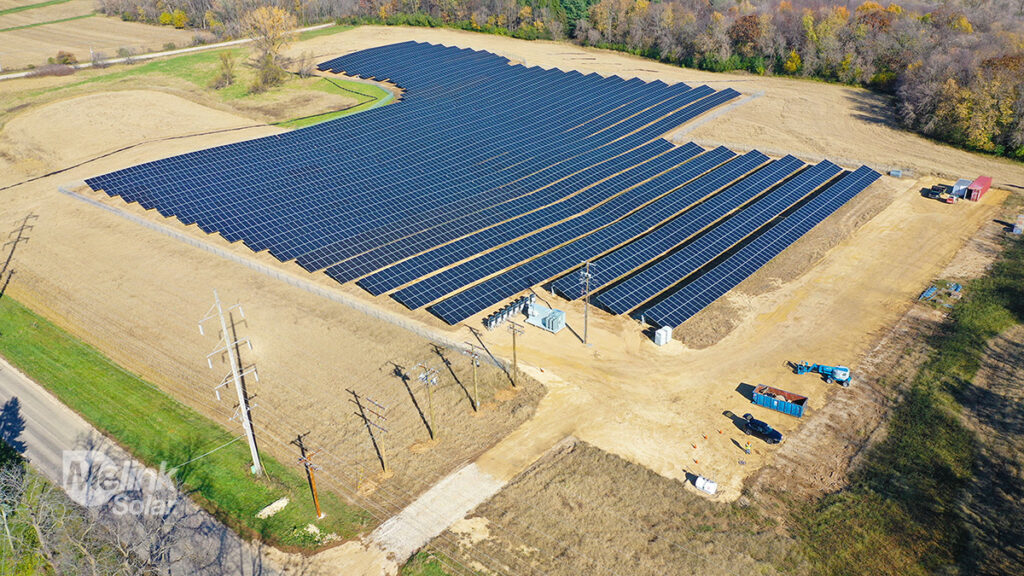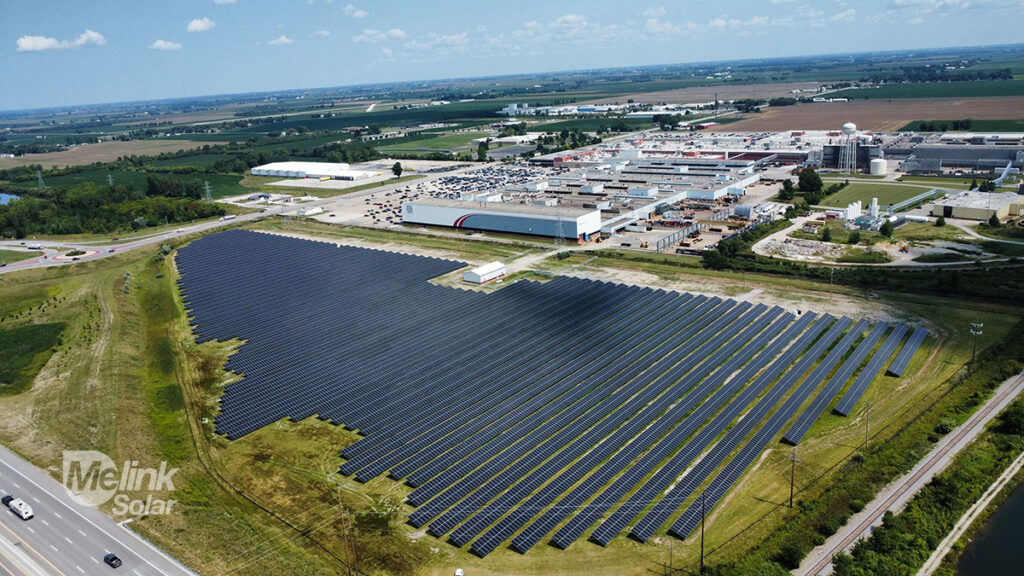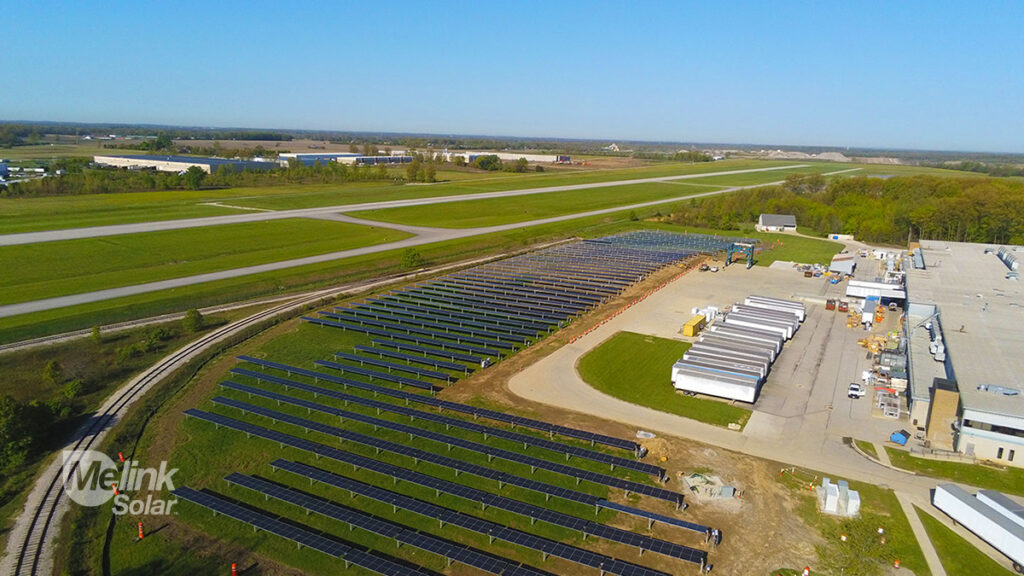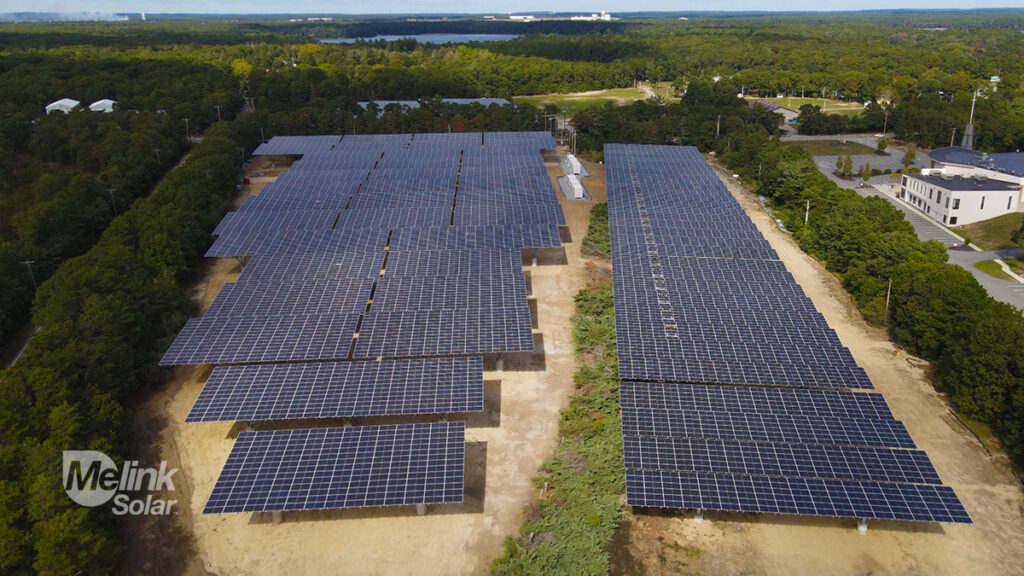Turning Brownfields into Brightfields!
A Practical Guide for Municipal Solar Redevelopment
How local governments are reclaiming brownfields with solar, supported by new legislation and proven project results.
Have Questions? Speak to a Brightfield Specialist
Turn your blight into something bright
The Untapped Power of Brownfields
Across the country, thousands of closed landfills, vacant industrial parcels, and former mining sites sit fenced-off and unproductive. When redeveloped as brightfields – solar installations on previously contaminated or under-utilized land – these properties flip from cost centers to resilient energy assets that:
- Generate long-term lease or power-purchase revenue that can offset remediation costs and fund other civic priorities.
- Reduce local carbon footprints while showcasing bold sustainability leadership.
- Catalyze economic development by attracting new businesses that value clean, low-cost power and revitalized neighborhoods.
The barrier has always been how to finance cleanup, expedite the permitting process, and convince stakeholders that the risk is worth the reward. The good news: recent policy wins and real-world proof points have changed that equation.
“Over the years, we’ve helped transform hundreds of unsafe, blighted and abandoned sites into new centers of opportunity across Ohio.”
Mike DeWinecontact us about your solar needs

Legislative Spotlight – OHIO House Bill 15 (HB 15)
HB 15 is a case study in how thoughtful legislation can speed brightfield adoption. While the bill is Ohio-specific, its framework signals what other states may soon emulate.
1. Priority Investment Areas (PIAs)
Local governments can pass a simple resolution requesting that the Ohio Department of Development designate a brownfield or former coal mine as a PIA. Once certified, the site gains three powerful advantages.
2. Five-Year Property-Tax Exemption
Electric-generation assets placed in a PIA enjoy a full five-year exemption from public-utility personal-property tax.
3. Up-to-$10 Million Site-Prep Grants
PIA sites can tap state grants for environmental assessments, remediation, demolition, and grading. Funds cannot purchase panels or racking, but they do de-risk everything required before construction.
4. 45-Day + 45-Day “Fast Track” Permitting
The Ohio Power Siting Board now has 45 days to confirm an application is complete and 45 days to issue a decision, after which the project is automatically approved if no action is taken.
A Municipal Step-by-Step Under HB 15
| Step | What Happens | Keys to Success |
|---|---|---|
| 1. Site Identification | Inventory idle parcels with known or suspected contamination | Leverage GIS + tax-delinquency records; start community conversations early |
| 2. Local PIA Resolution | City council, township trustees, or county commissioners pass a boundary map and submit to the state | Keep the resolution short – boundaries, intent, tax-exemption request |
| 3. PIA Certification | State development director approves (or auto-approves after 90 days) | Provide evidence the site was impacted by industrial decline or coal closures to expedite |
| 4. Grant Application | Apply to the Brownfield Remediation Program for up to $10M | Emphasize shovel-ready timelines and community benefits |
| 5. Select a Solar Developer | Issue RFP or negotiate with a qualified EPC like Melink Solar | Prioritize brownfield experience and landfill-safe mounting methods |
| 6. Accelerated Siting Review | Developer files with Power Siting Board; decision due in 45 + 45 days | Pre-meet with regulators to resolve interconnection or wildlife questions. |
| 7. Construction & Commissioning | Remediation, racking, modules, interconnection | Coordinate closely with grant administrators to document compliance |
| 8. Promotion & Community ROI | Ribbon-cuttings, STEM tours, and annual energy dashboards | Show tangible savings, new tax revenue after the five-year holiday, and environmental metrics |
Melink Solar Brightfield Project Showcases
Jackson Utility-Scale SolaR PROJECT
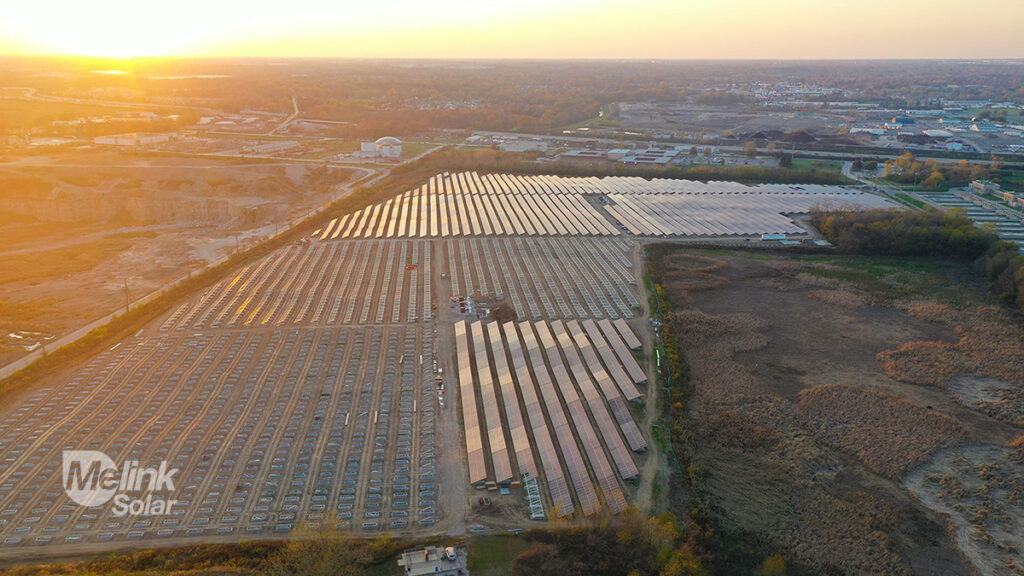
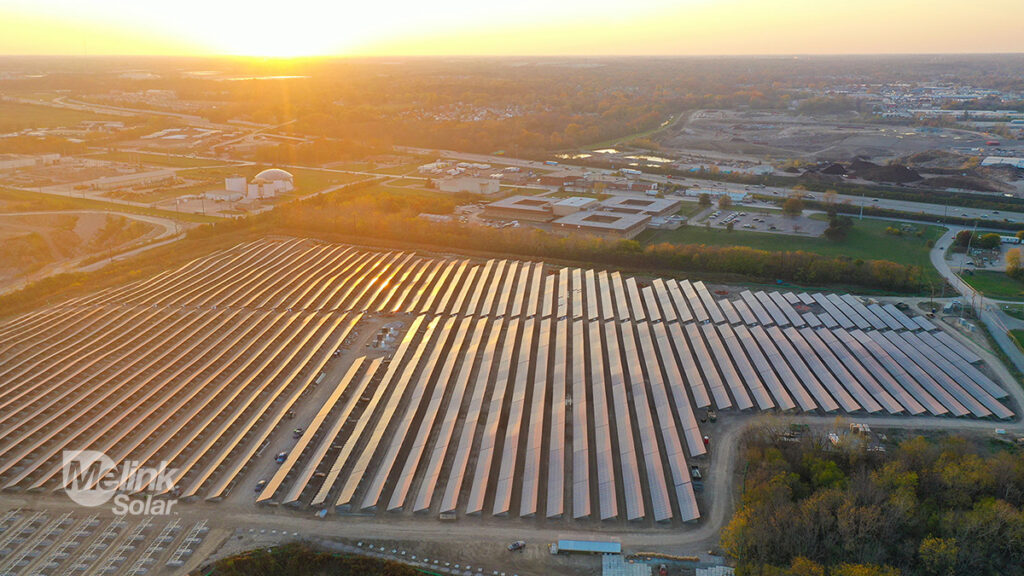
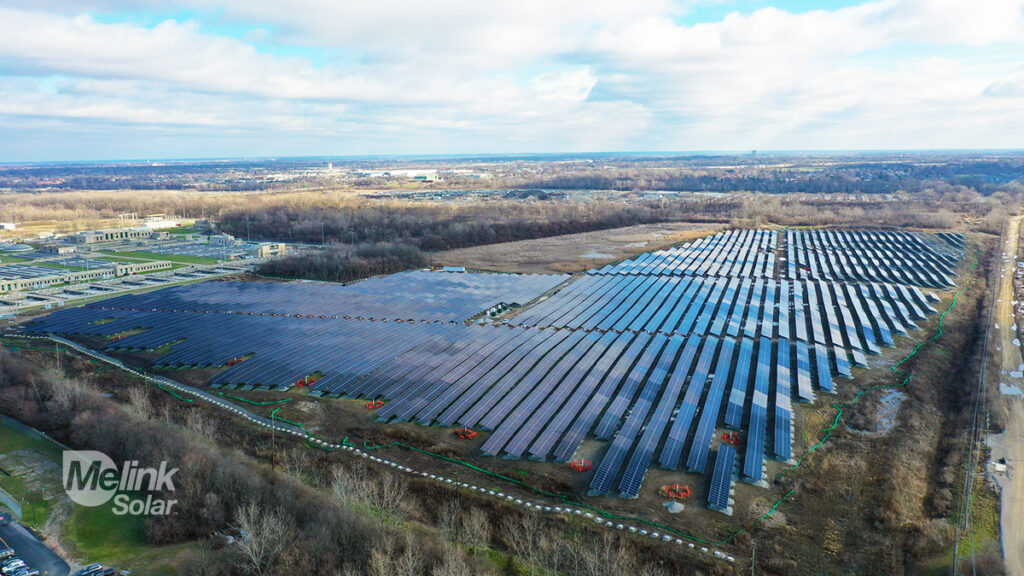
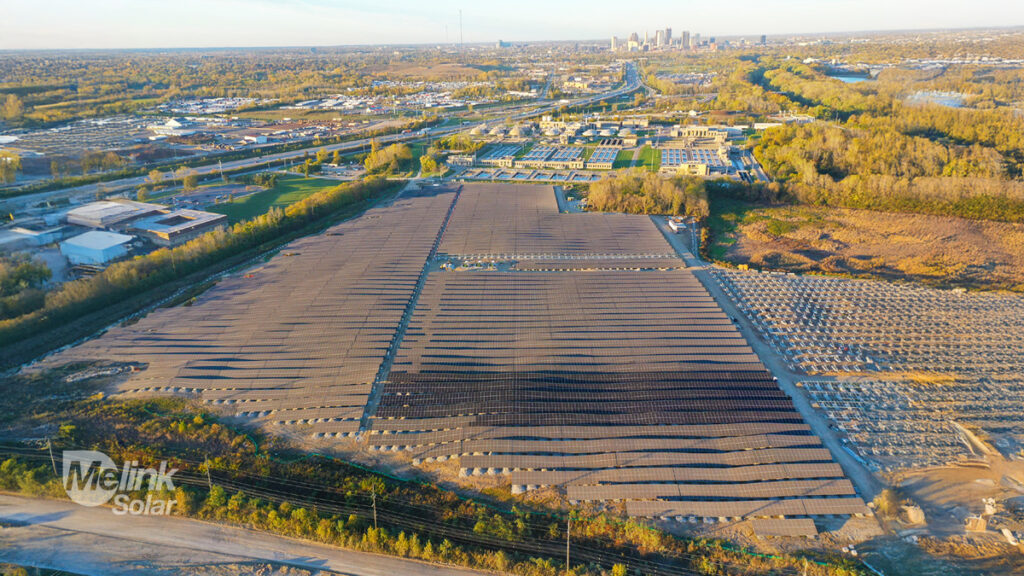
Built on a formerly under-utilized industrial parcel in central Ohio, the 23.4MW ground-mount array now offsets 31,991 tons of CO₂ annually, equivalent to taking 79 million gasoline miles off the road.
- The ballasted design eliminated the need for deep foundations, thereby preserving the cap.
- Early engagement with the county engineer resolved drainage concerns.
Parsons Utility-Scale SolaR PROJECT
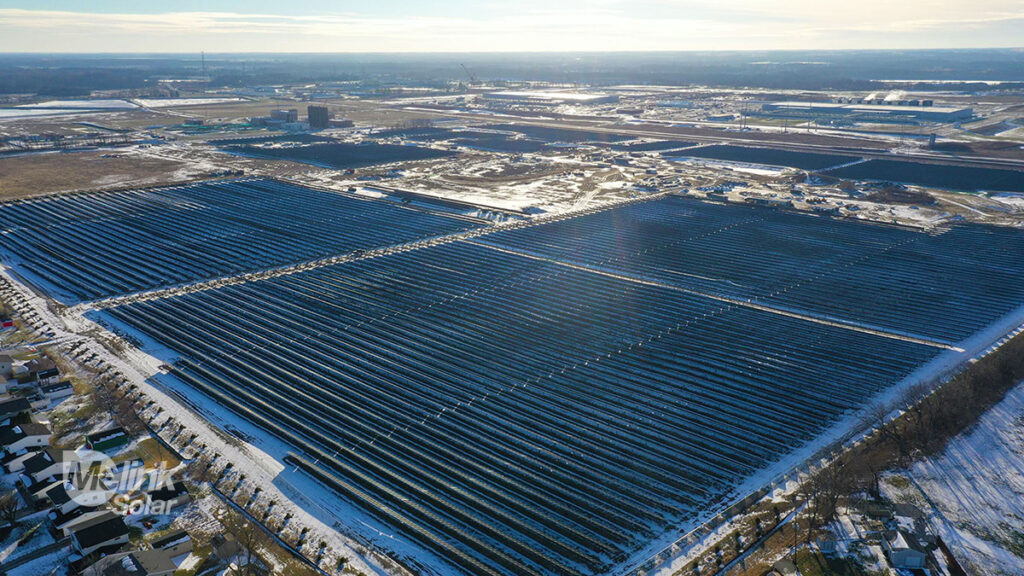
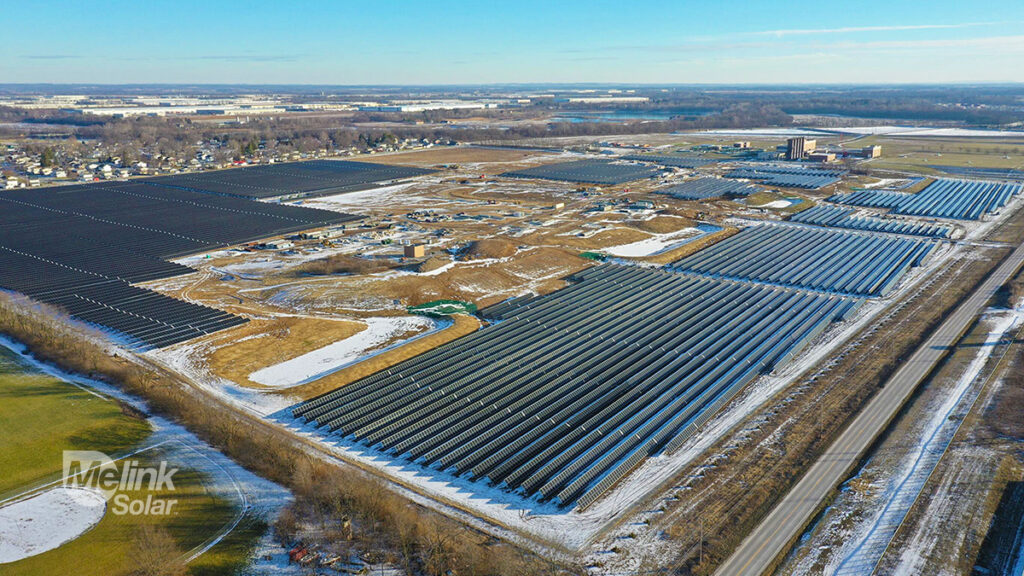
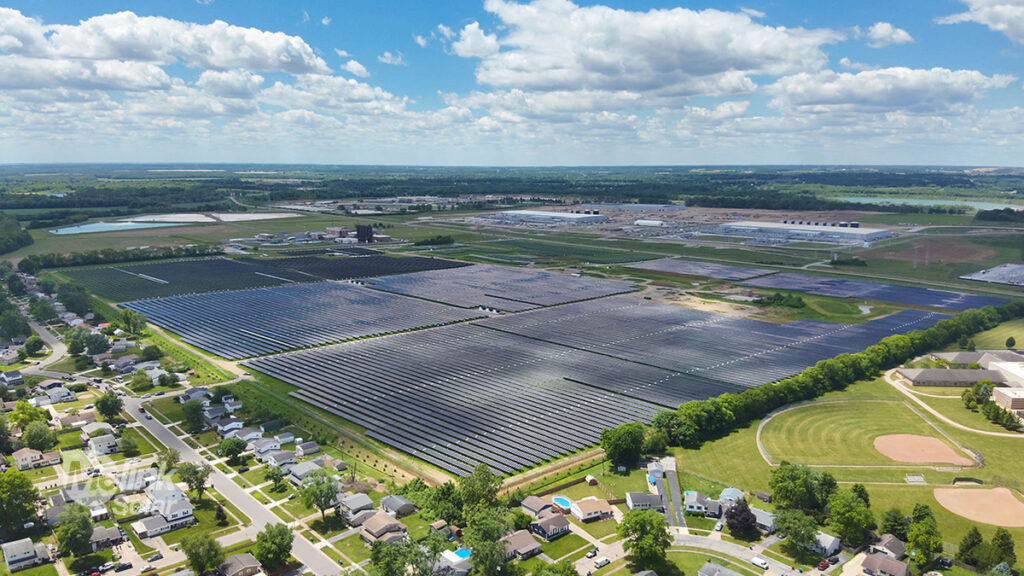
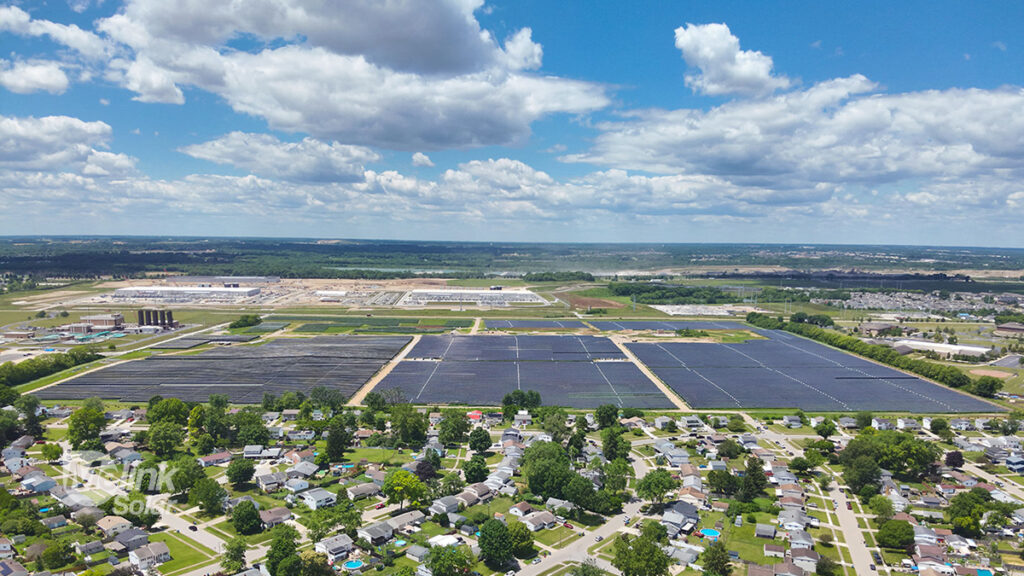
At 34MW, the Parsons Brightfield repurposed an inactive brownfield near Columbus. It now offsets 46,482 tons of CO₂, equivalent to the climate benefit of 774,707 new trees.
- Joint-venture financing splits ownership between the city and a private IPP (Independent Power Producer – a Utility-Scale solar power operator), thereby lowering local capital outlay.
- Public open-house events built community pride and transparency.
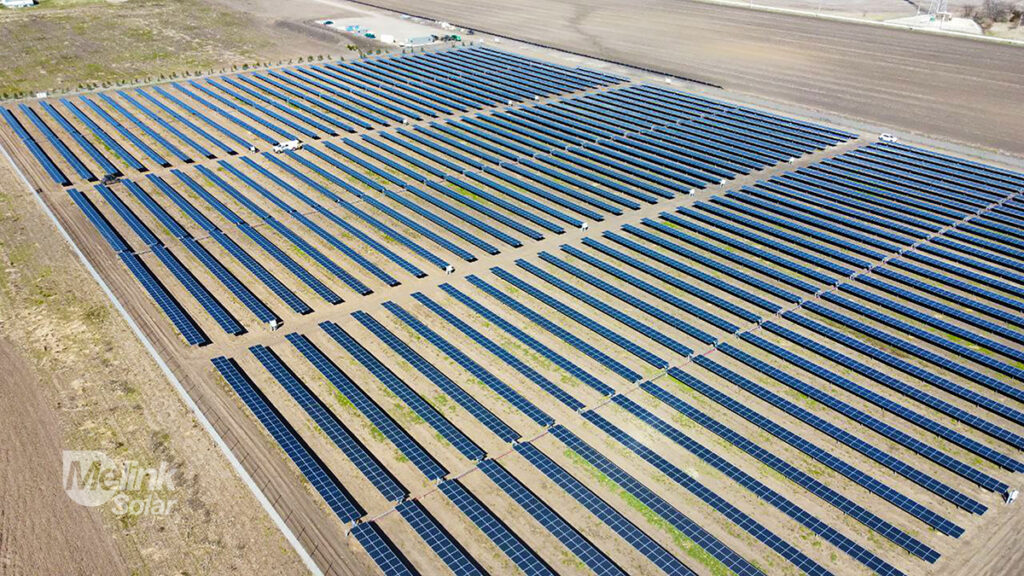
Brightfields Beyond One State
Even if your site falls outside Ohio, similar levers exist:
- Federal ITC “Energy Community” Bonus – Adds 10 percentage points for projects on brownfields.
- EPA & DOE Technical Assistance – Free screening tools and grant matchmaking.
- State Brownfield Funds – Illinois, Michigan, and Pennsylvania all now offer cleanup grants or tax increments that pair well with solar leases.
The Takeaway:
While HB 15 is Ohio-specific, its trio of tax relief + cleanup money + fast permitting is rapidly becoming a best-practice template nationwide.
Why Brightfields Work for Communities
Turning a liability into an asset isn’t just good PR – it makes fiscal sense.
- Reclaims Dead Land for Revenue – Lease payments or PILOT agreements convert a maintenance burden into predictable cash flow that can fund parks, police, or schools.
- Avoids Prime Farmland Conflicts – Brownfields are already scraped or capped, eliminating the tension solar can create in agricultural zones.
- Strengthens Grid Resilience – Projects are often sited near existing substations, minimizing new transmission costs and improving local voltage stability.
- Showcases Environmental Leadership – Demonstrating visible progress on climate commitments helps secure grants and attract new employers seeking ESG-aligned locations.
“There has never been a better time to turn our nation’s polluted lands into brightfields — beacons for our clean energy future.”
— Jon Powers, President & Co‑Founder, CleanCapital
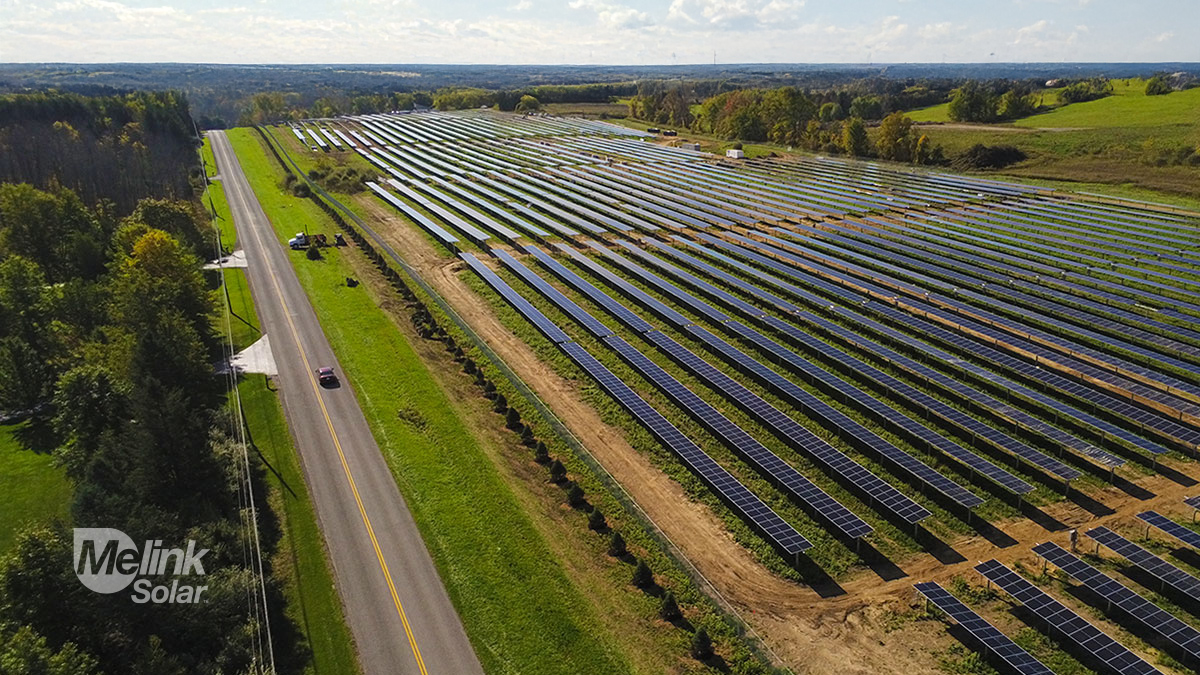
Why Melink Solar?
As a nationally recognized Commercial Solar EPC with deep experience in the Midwestern utility scale solar sector, Melink Solar can help you navigate the brownfield to brightfield transition. We have years of Brownfield Experience – From capped landfills to coal-ash ponds, our team knows how to engineer around complex geotechnical and environmental constraints. We’re the Midwest’s #1 Commercial Solar EPC with Over 275MW installed regionally and ranked by Solar Power World for utility-scale excellence. Our In-house experts can help you identify and structure PPA, lease, or direct-ownership models that align with municipal procurement rules. Our Community Engagement Playbook enables us to provide you with ready-made materials, including press releases, signage, and STEM curriculum, to keep residents informed and proud.

Ready to Explore a Brightfield?
Let us help you transform yesterday’s industrial scars into tomorrow’s clean-energy success story.
Melink Solar Brownfield and Utility Scale Projects
Kent State University – Main Campus
–Kent, OH
Solar Project Categories – Ground Mount
Solar Markets – Schools and Universities, Solar Developers
Sand Prairie
–Green Valley, IL
Solar Project Categories – Ground Mount
Solar Markets – Solar Developers
Pontiac
–Pontiac, IL
Solar Project Categories – Ground Mount
Solar Markets – Solar Developers
Freeport
–Freeport, IL
Solar Project Categories – Ground Mount
Solar Markets – Solar Developers
Automotive Manufacturing
–Saginaw, MI
Solar Project Categories – Ground Mount
Solar Markets – Commercial and Industrial, Solar Developers
Jackson
–Columbus, OH
Solar Project Categories – Ground Mount
Solar Markets – Solar Developers
Parsons
–Columbus, OH
Solar Project Categories – Ground Mount
Solar Markets – Solar Developers
Delaware Airport
–Deleware, OH
Solar Project Categories – Ground Mount
Solar Markets – Solar Developers
Barnstable
–Falmouth, MA
Solar Project Categories – Solar Canopy
Solar Markets – Municipalities and Government, Solar Developers
Our Process
Virtual Design & Price Estimate
Melink Solar requests electric bills, understands layout options, provides budgetary analysis
Financial Analysis Review
Customer reviews proposal, confirms project assumptions, aligns on payment options & timing
Final Design & Cost
Conduct detailed engineering onsite, finalize project costs, contract execution, align on payment terms
Permitting & Installation
Melink Solar submits for permits, interconnection, procurement, begins construction
Custimer Training & Monitoring
Melink Solar provides onsite training and system monitoring

